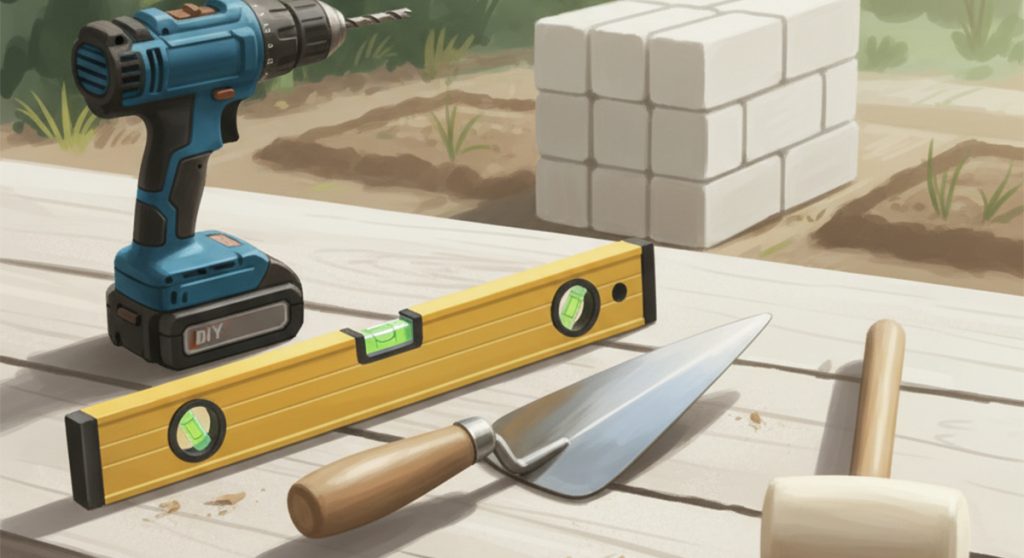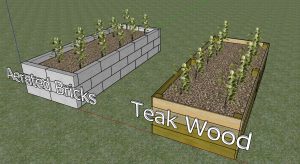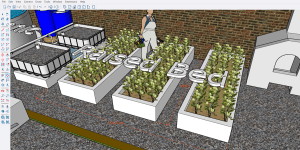Hello again from the NaraMora planning desk! As we get closer to actually starting our first big build—the aerated brick raised garden beds—my mind has shifted from what we’re building to how we’re going to build it. Specifically, what essential DIY backyard garden tools are we actually going to need?
If you read our last post about why we chose bricks over wood, you know this marks a bit of a pivot for me. While I have some familiarity with woodworking tools from my furniture business background, diving into masonry is a whole new adventure. It means learning new techniques, and potentially, acquiring some new gardening tools and construction gear.
As a passionate learner (and definitely not an expert!), this research phase is just as important as the build itself. Getting the right tools for the job not only makes the work easier and safer, but it also leads to a much better final result. So, I wanted to share my current research process and the “wishlist” of essential DIY backyard garden tools I’ve identified for the NaraMora projects ahead. This isn’t a definitive “best tools ever” list; it’s an honest look at what a beginner like me is learning and planning for when gathering the necessary backyard tools.
The Research Rabbit Hole: Learning Before Doing
My approach has been pretty simple: dive in headfirst! I’ve spent countless hours watching videos from both professional masons and everyday DIYers building their own brick projects. I’ve read blog posts, compared reviews, and spent a perhaps embarrassing amount of time just browsing online tool shops looking for the best DIY garden tools.
My main goal is to find that sweet spot between quality, durability, and value. I’m not looking for the cheapest tools, because I know from experience that cheap tools often lead to frustration and poor results. But I also don’t have the budget for top-of-the-line professional gear. I’m looking for reliable, hardworking tools that will serve our family well for this project and hopefully many more to come.
So, after all that digging, here’s my current “Essential Tools Wishlist” for the NaraMora builds, starting with the immediate needs for our masonry raised beds.
1. The Mason’s Trowel: A Key Masonry Tool
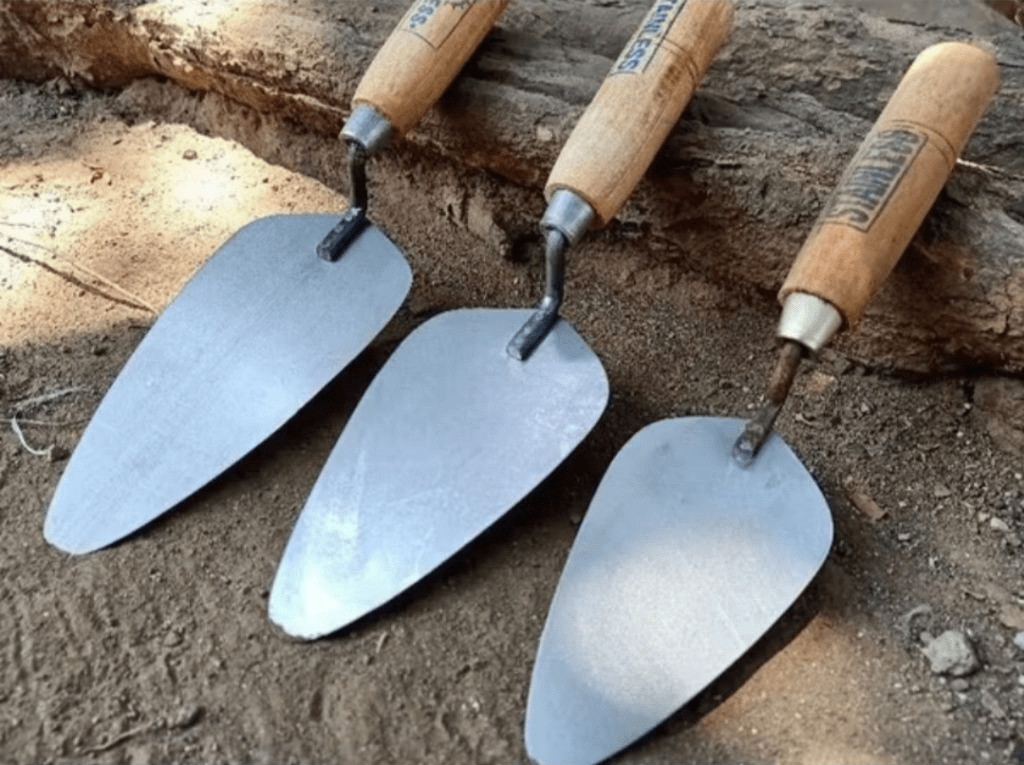
This seems like the most fundamental tool for working with bricks and mortar. It’s not just for scooping the mortar; the shape and edge are designed for spreading it evenly, tapping bricks into place, and scraping away the excess.
- My Research: I learned there are different shapes and sizes (like the pointed “Philadelphia” style vs. the square “London” style). For a beginner doing simple wall building like our raised beds, it seems a medium-sized, pointed trowel offers good versatility. I’m looking for one with a comfortable handle and a blade made from strong, tempered steel that won’t bend easily. This feels like a tool where a little extra quality will make a big difference in usability when working on our backyard garden.
2. The Spirit Level: The Non-Negotiable Tool for Straight Walls

If there’s one tool that seems absolutely critical for masonry, it’s a good, long level. Unlike wood, which can sometimes flex a little, bricks are unforgiving. If your first course isn’t perfectly level, the entire wall will be off.
- My Research: Everyone emphasizes the importance of a long level for brickwork, ideally at least 1 meter (or ~48 inches). A longer level spans more bricks and gives you a much more accurate reading than a short one. I’ll also need a smaller “torpedo” level for checking individual bricks. I’m looking for a sturdy aluminum body and clear, easy-to-read vials. This is one tool I definitely won’t skimp on. Accuracy is everything here, making it one of the truly essential DIY backyard garden tools for this phase.
3. The Rubber Mallet: Gentle Persuasion for Bricks
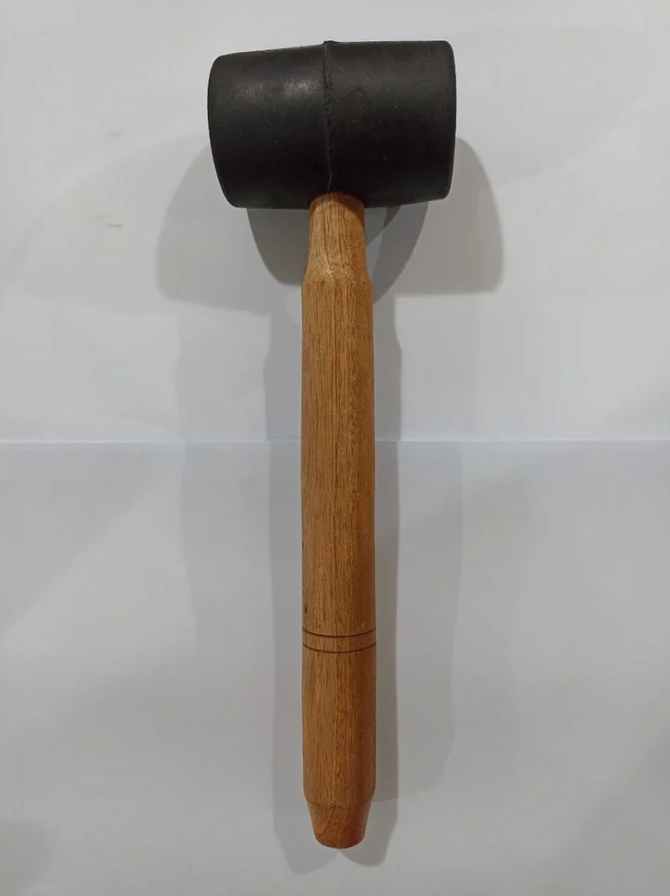
When laying bricks, you often need to gently tap them into the mortar bed to get them perfectly level and aligned. Using a regular hammer would crack or chip the aerated bricks.
- My Research: A rubber mallet provides that necessary force without damaging the material. They are simple and inexpensive, but essential. I’m looking for one with a solid rubber head (not plastic) and a comfortable, non-slip grip.
4. Mixing Gear: Wheelbarrow, Buckets, and Hoe
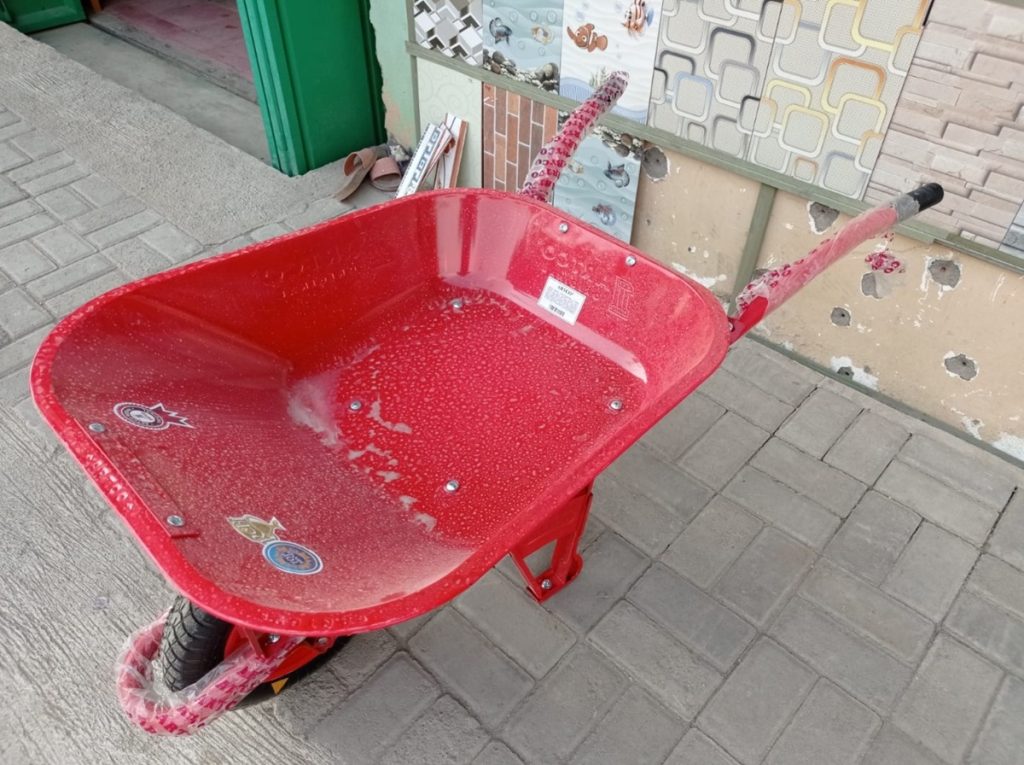
You can’t lay bricks without mortar, and you can’t have mortar without mixing it. Since I’ll be mixing my own sand and cement for the foundation course, and potentially the thin-bed adhesive too, having the right mixing gear is crucial.
- My Research: A sturdy wheelbarrow seems like the best investment for mixing larger batches of mortar efficiently. For smaller batches of the adhesive, heavy-duty buckets will work. A strong garden hoe or a dedicated mortar hoe is apparently the best tool for thoroughly combining the materials. This part seems like hard work, but having the right containers will make it much more manageable.
5. The Cordless Drill: An Essential DIY Backyard Garden Tool
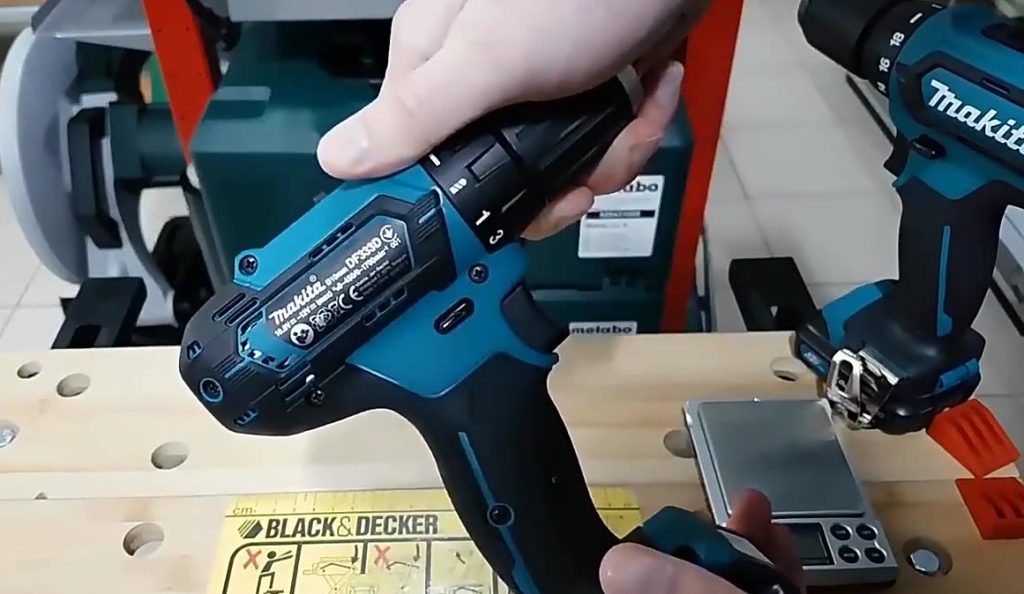
Okay, so maybe you don’t use a drill directly for laying bricks. But I know from experience that a reliable cordless drill is the heart of almost any DIY project, especially in the garden.
- My Research & Justification: I’ll definitely need it for things like potentially attaching the plastic liner inside the beds, building simple wooden frames or supports, assembling future furniture, and countless other tasks around the backyard. For the NaraMora projects overall (thinking ahead to the deck, furniture, and kitchen), investing in a good drill now makes sense. I’m specifically researching brushless drills. They cost a bit more, but the technology means they are more efficient, run cooler, and have a longer lifespan. Battery life is also a huge factor – I’m comparing systems to see which offers the best balance of power and runtime. This is likely to be one of the bigger tool investments among our essential DIY backyard garden tools.
6. The Miter Saw: A Woodworking Essential (Still on the List!)
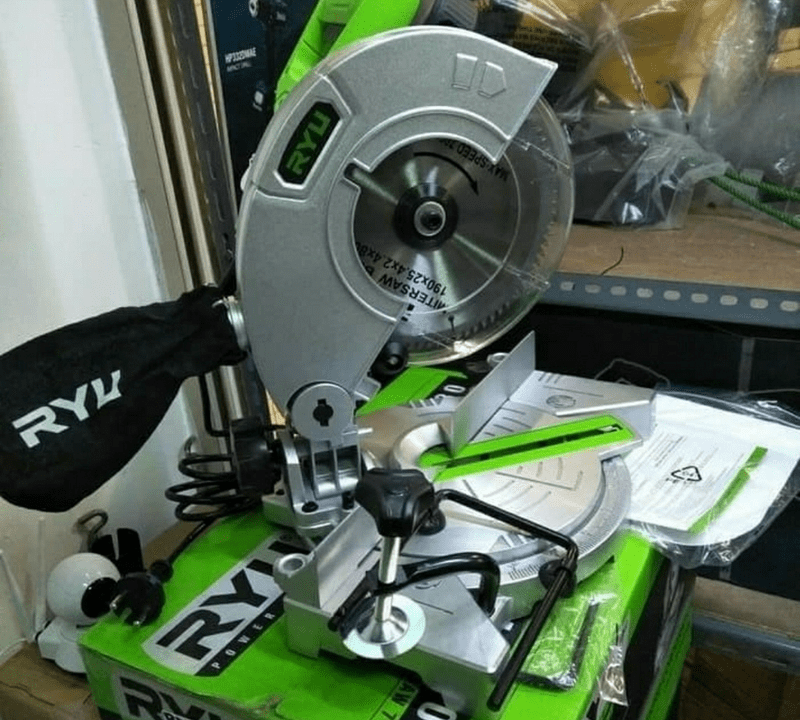
Even though we pivoted to bricks for the raised beds, I know there will be plenty of woodworking in NaraMora’s future: the deck, the pergola, the dining set, maybe even parts of the outdoor kitchen. A miter saw is invaluable for making clean, precise, and repeatable cuts in wood, especially angles.
- My Research: While I have access to some tools through my business, having a reliable one dedicated to the backyard project seems wise. I’m looking at 10-inch or 12-inch sliding compound miter saws, researching blade types (a fine-tooth blade for finishing cuts vs. a general-purpose blade), and dust collection features (sawdust gets everywhere!). This is another bigger investment I’m planning for. While not strictly a garden tool, it’s essential for building the garden space.
7. Safety First: The Non-Negotiables
This isn’t really a “wishlist” item, but a fundamental requirement when using any tools, especially beginner garden tools or construction equipment.
- My Plan: Before any work begins, I’ll ensure I have good quality safety glasses, sturdy work gloves (especially important for handling bricks and mortar), and dust masks. Simple, inexpensive, but absolutely essential for staying safe and enjoying the process.
The Journey Continues: Saving Up, Finding Time & Learning More
So, that’s my current tool wishlist, born from hours of research and planning. I haven’t purchased everything yet. Like the materials for the beds themselves, acquiring these tools is part of the saving and preparation phase. It’s also about finding the time! Running my furniture business keeps me incredibly busy, so carving out the hours for these backyard projects requires careful planning. But we’re getting there, step by step.
Sharing this list feels like another step in making the NaraMora project real. It’s the practical side of turning a dream into reality. I’m sure I’ll learn even more once I actually start using these tools, and I promise to share those real-world experiences too.
What do you think of this list of essential DIY backyard garden tools? Are there any crucial backyard tools I’ve missed? Or do you have any specific recommendations based on your own experience? I’m still very much in the learning phase, and I’d be incredibly grateful for any advice you might have in the comments!
Warmly, Zulham Efendi

